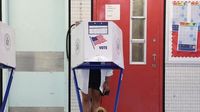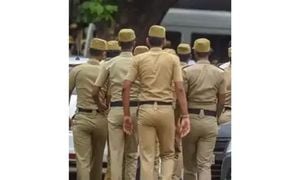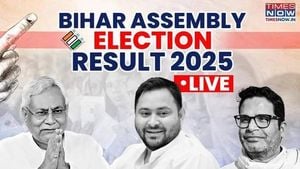New York City is poised to make a decision that could reshape how—and when—millions of its residents participate in local democracy. On September 24, 2025, voters across the five boroughs will weigh in on a proposal to move the city’s mayoral elections from odd-numbered years to even-numbered years. If approved, the change would align the city’s marquee municipal contests with state and national elections, joining a growing national movement to consolidate election calendars and, ideally, boost voter turnout.
This isn’t just a New York story. According to NPR, cities and states across the country are grappling with the same question: Should local elections be held separately, or is it time to roll them into the same cycles as presidential and midterm races? The stakes may seem technical, but the implications touch the heart of American democracy—who votes, how often, and for whom.
Currently, most local elections in the United States—including races for city council, school board, and various bond measures—are what election experts call “off-cycle.” That is, they take place in odd-numbered years, separate from the high-profile federal and statewide contests. Katy Owens Hubler, director of elections and redistricting at the National Conference of State Legislatures, explained to NPR, “So, all throughout the year, you know, any given Tuesday, there’s probably an election somewhere in the country.”
Why keep it this way? Many states require, by their constitutions, that local races be held apart from federal and state elections. About a third of states, however, leave the timing up to local officials, noted Zoli Hajnal, a political science professor at UC San Diego. Yet, even when given the choice, most local leaders opt for odd-year elections. The reason, according to Hubler, is a fear of getting “lost in the shuffle.” Local officials worry that their issues and candidates will be overshadowed by the drama and spending of bigger-ticket races. “There could also be a campaign finance aspect of this where they feel that they can’t actually raise the funds that they need to run a campaign because they’re competing with the state-level candidates or even national-level candidates,” she added.
But there’s a cost to this separation—literally and figuratively. As Hajnal put it, holding local elections in odd-numbered years has resulted in “extremely low” turnout, a trend that’s only worsened over the past several decades. “And there is essentially no better solution to low voter turnout at the local level than moving local elections to the same day as statewide and federal elections,” Hajnal told NPR.
The numbers bear him out. Take Las Vegas, for instance. When the Nevada Legislature gave cities the option to shift their elections to even-numbered years, few took the plunge. Turnout in Las Vegas hovered around 37,000 voters. But when the city was required to switch in 2019, the first on-cycle election saw more than 244,000 voters participate—a staggering jump. According to NPR, this wasn’t just a fluke. The change also broadened the electorate, bringing in more young people, racial and ethnic minorities, and working-class voters. “So as you move to on-cycle elections, you also change the mix of voters,” Hajnal explained. “And the biggest thing is you get a lot more younger voters. You also get more racial and ethnic minority voters, people of color, and potentially also some greater mix of working class and poor Americans participating as well.”
It’s not just about turnout, though. Consolidating elections can also mean serious savings for local governments. Katie Thompson, a director at the American Legislative Exchange Council (ALEC), pointed out that running separate local elections is expensive. “Even when you’re looking at the volunteers required to staff elections, it is way harder to get the personnel you need during off-cycle years,” she said. “And personnel is really important to the security of elections, which I think we can all agree is an important factor. We want the polls to be adequately staffed.” Paper, energy, and staffing costs all add up, and for many localities, combining elections into a single, larger event could free up resources for other priorities.
Interestingly, the push for consolidation isn’t falling along the usual partisan lines. While efforts to boost turnout have often been associated with the political left, conservative groups like ALEC also support the shift—albeit for different reasons, such as cost savings and administrative efficiency. Thompson told NPR that ALEC is recommending GOP-led states move their local races to on-cycle elections as a way to save money and streamline operations.
And the momentum is building. In 2025 alone, 29 states introduced legislation to consolidate election dates in some form, with 12 states enacting such laws so far. The trend cuts across both Democratic-run states like Washington and Republican-led states such as Indiana, signaling a rare moment of bipartisan agreement on election reform, at least in principle.
Of course, no reform is without its critics or complications. One frequently cited concern is the dreaded “long ballot.” Consolidating elections means voters could face a daunting list of choices, potentially leading to longer lines at polling places or even voter fatigue. Hajnal acknowledged the risk: “Yes, there is some ballot drop-off. So the longer the ballot, the more people who drop off. But the jump in participation is so high that it much more than offsets that small ballot drop-off.”
Thompson, for her part, believes most voters would gladly trade a few extra minutes in the booth for the convenience of a single, consolidated election. “The extra few minutes it would take to fill out the next two or three races on the ballot is still less time than knowing that there’s an election, driving to the polls, voting, driving all the way home,” she said. “It would just be more convenient for people to have those elections on one ballot in a consolidated place versus having to go to all this extra time and expense and effort to go for a whole separate election cycle.”
There’s also the administrative burden of running so many scattered elections. Hubler noted, “There’s all these things that you have to do for a regular election anyway. And now you can just do that once as opposed to a number of different times for the smaller races.” For overworked election officials, consolidation could mean fewer headaches—and fewer chances for mistakes.
But for New York City, the path forward isn’t entirely straightforward. If voters approve the proposal this fall, it would require a change to the state constitution before taking effect. That extra hurdle means the process could take time, and the debate over timing, turnout, and logistics is far from over.
Still, as cities and states reconsider how they conduct the most basic act of democracy, New York’s decision could set a precedent for others to follow. Whether the city’s voters embrace the change—or stick with tradition—will send a powerful signal about the future of local elections in America.




